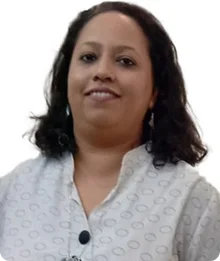Disease management programs (DMPs) are defined as “structured treatment plans that aim to help people manage their chronic disease in a better way and to maintain as well as improve quality of life”. The main components of disease management programs are mentioned in Figure 1.
Figure 1: Components of Disease Management Software
By application, the care management solution is classified into chronic care management, disease management and utilization management.
Disease Management Software’s
According to Markets and Markets™ report, the disease management software market is expected to reach USD 37.94 billion by 2027 from USD 14.12 billion in 2019. This may be attributed to the rising geriatric population and burden of chronic diseases.
The disease management software is used to manage, monitor, and process patient data by connecting to electronic health record (EHR) and other healthcare data sources. It aims to reduce healthcare costs and promote government initiatives to assist patient-centric care. The high growth in this segment can be attributed to the ability of these solutions to reduce the cost of care with the help of protocol management and prevent episodes of ill health through comprehensive health management.
To be included in Disease Management Software category, a product must have the following characteristics as mentioned in Figure 2.
Figure 2: Characteristics of Disease Management Software
Some of the examples of disease management software are mentioned in Figure 3.
Figure 3: Examples of Disease Management Software
Mobile Health Apps for Disease Management
Due to widespread use of smart phones and tablet computers, disease management via mobile health apps is easy and is expanding rapidly. Around 3.7 billion apps were downloaded in 2017 and is expected to grow by 16% within the next year. Many apps are available in play store and iTunes for clinical disease management and patient self-management of conditions including asthma, diabetes, heart disease, cancer, and even autism and insomnia. These apps help both doctors and patients as money can be saved by patients and doctors can save on labour force. Some of the apps for chronic disease management are mentioned in Figure 4.
Figure 4: Examples of Disease Management Applications
Poor Usage of Disease Management Software’s and Mobile Apps
One of the reasons why the healthcare apps or software’s fail is because of the lack of understanding about the healthcare apps. Most of the health care apps get uninstalled either due to the highly scientific content which is difficult for the laymen to understand. Apps with very basic scientific content also fail to impress the audience. Therefore, it essential to involve a medical writer who has a scientific background and knows the subject comprehensively. The content for such software’s or apps must be developed based on patient’s requirement, target audience and should be specific to a region.
Role of Medical writing in Developing Health Related Software’s and Mobile Apps
According to Grand View Research, global medical writing industry is expected to reach USD 3.75 billion by 2026. Medical writers are involved in analysis and reporting of retrospective and prospective clinical trials, research methods (descriptive and predictive), health economics, and evaluation of disease management initiatives. Medical writers also play a key role in developing applications for mobile devices that are used in multiple ways, such as:
- Disease management
- Continuing education and training
- Medical reference and information-gathering
- Practice management and monitoring
The medical writer creates informational or instructional materials for use in health or medical context. These materials allow different audiences to understand health and medical situations or practices, perform certain health or medical-related activities, or use a health/ medical product/ mobile health apps or device. Medical writers must have the following skills to develop medical content:
- They must possess medical and therapeutic knowledge, and must have understanding about the recent regulations and technical guidelines
- They must have mastery in language and grammar, proof reading and editing skills, ethical and legal issues related to writing
- They must have creative writing skills to articulate the scientific information in clear and approachable language
- As scientific writers are involved in creating content for mobile medical apps and other disease management software’s, it is essential for them to possess instructional designing skills
Writer Groups Initiative in Developing Disease Management Programs
The heterogeneity of disease management programs has made it difficult to compare and evaluate different programs. The American Heart Association’s Disease Management Taxonomy Writing Group developed a taxonomy or system of classification to classify and compare different disease management programs and to inform efforts to identify specific factors associated with effectiveness.
The writers did a MEDLINE (Medical Literature Analysis and Retrieval System Online) search on the terms heart failure, diabetes, and depression, together with disease management, case management, and care management. English articles published between the time period 1987 and 2005 were considered for the program. The following studies were considered:
- Interventions designed to improve outcomes and/or reduce medical resource utilization in patients with,
- Heart failure
- Diabetes
- Depression
- Clearly defined protocols with at least two prespecified components traditionally associated with disease management
A taxonomy was developed by the writer’s group with eight domains. A graphic representation of the taxonomic structure and subdomains are found in the Figure 5.
Figure 5: Taxonomic Structure and Subdomains
Turacoz Healthcare Solutions understands its professional responsibility and takes an initiative to make authors and medical writers aware about their role in developing disease management programs. Turacoz is a medical communication company that provides scientific/medical writing support to the industry and academicians.
To contact us, click here.











































